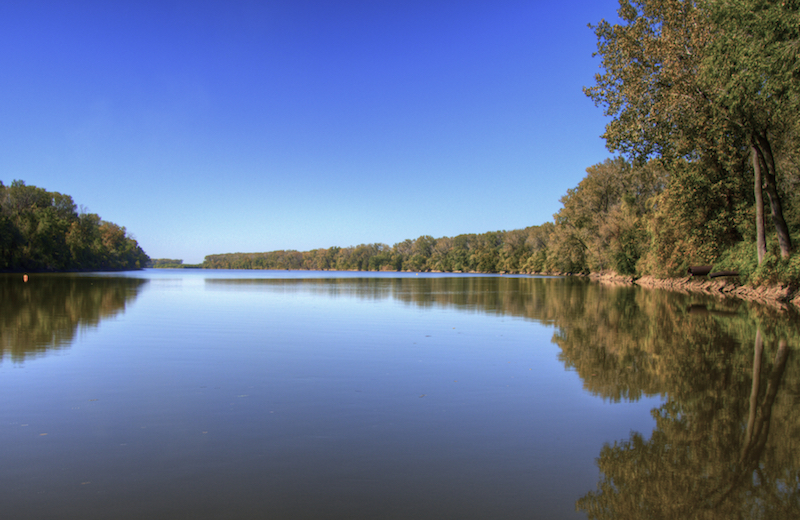Welcome y'all again to the twelfth installment of the 36ish part 2018 Monster Energy NASCAR Cup Series Autosport Series. 12th race weekend of the season is go in a place called KCK.

this place is one small consanant change from being an actual hate group
Here we are. Just M O M E N T S away from the actual race. So the schedule for this round will look like this:

Life has a habid of getting rather busy sometimes.
What happened last race?
Harvick. Harvick happened. Yes; again. To the dismay of most lost Nascar watching souls, this unstoppable Sagittarius dominated the concrete of the Monster Mile.

laugh or cry all you want, but it's still to early to tell
Kudos to our Shithead though. I am one of those Motorsport fans that absolutely doesn't mind complete domination by one driver or team. The exception being Marq Marquez.

I am 110% sure Marq Marquez is one of those bad Reptilians. I am not so sure that we have those in Nascar
As much as Bill France wants to be a part of the Reptilian elite hierarchy, he is still small time. And there are new rumors of Nascar being O N S A L E.

sorry Liberty, you missed the boat
What say you about this seemingly vague but breaking news? I say yay(?). Nascar needs to learn the sacred mantra of: 'Choose change before Change chooses you'.

actual map of Kansas
The state of Kansas was named after the river.
The Kansas River, also known as the Kaw, is a river in northeastern Kansas in the United States. It is the southwestern-most part of the Missouri River drainage, which is in turn the northwestern-most portion of the extensive Mississippi River drainage. Its two names both come from the Kanza (Kaw) people who once inhabited the area; Kansas was one of the anglicizations of the French transcription Cansez (IPA: [kɑ̃ze]) of the original kką:ze. The city of Kansas City, Missouri was named for the river, as was later the state of Kansas.
The river valley averages 2.6 miles (4.2 km) in width, with the widest points being between Wamego and Rossville, where it is up to 4 miles (6.4 km) wide, then narrowing to 1 mile (1.6 km) or less in places below Eudora and De Soto. Much of the river's watershed is dammed for flood control, but the Kansas River is generally free-flowing and has only minor obstructions, including diversion weirs and one low-impact hydroelectric dam.

The Kansas drains 34,423 square miles (89,160 km2) of land in Kansas (almost all of the northern half), along with 16,916 square miles (43,810 km2) in Nebraska and 8,775 square miles (22,730 km2) in Colorado, making a total of just over 60,000 square miles (160,000 km2). When including the Republican River and its headwater tributaries, the Kansas River system has a length of 743 miles (1,196 km), making it the 21st longest river system in the United States. Its highest headwaters are at about 6,000 feet (1,800 m) and extend nearly to Limon, Colorado. Much of the drainage of the river lies within the Great Plains, but the river itself exists entirely within the Mid Continent Region. The majority of the rest of the state is drained by the Arkansas (and its tributaries, the Neosho, Cimarron, and Verdigris, all three of which drain into the Arkansas in Oklahoma). A portion of central-eastern Kansas is drained by the Marais des Cygnes River, which flows into Missouri to meet the Missouri River. A small area in the extreme northeast part of the state drains directly into the Missouri. In the Kansas City metro area, some streams drain east into the Blue River tributary of the Missouri.
Because of the river's shallow depth, slow drainage, high silt contents, and proximity to industrial centers, the Kansas River was ranked as the 21st most polluted water body in the United States in 1996

The Kansas River flows through what is known as the Stable Interior region. Since this region is near the center of the North American Plate, it has not experienced any extensive geologic faulting, folding, or mountain building in recent geologic time. The river flows through limestone and shale strata that, except for diagenesis, remain largely undisturbed since deposition beneath the Western Interior Seaway. The age of the rock exposed by the river becomes progressively older as the river moves downstream for two main reasons. First, downstream areas experience more erosion from increased flow, and second because the slight uplift of the Ozark dome to the southeast caused the strata in Kansas to dip very slightly to the west.
All of the rocks in the area are sedimentary, ranging from Late Pennsylvanian (300 million years ago) to recent, with three minor exceptions. The first is sand and gravel brought down from the Rocky Mountains which have settled in the western extents of the Kansas River basin. Second, the retreat of the Kansan glaciation left behind a combination of ice- and meltwater-deposited sediments known as drifta, a poorly sorted mixture of clay, sand, gravel, and even large boulders that cover parts of the extreme eastern portion of the Kansas River basin. The third is loess, a fine silt that may have originally been deposited by the melting water of the receding glaciers, then redeposited by the wind. The thickest loess deposits can be found in the northwest and north-central part of the Kansas River basin from southern Nebraska into northwest Kansas, as well as near the river's mouth.

The first map showing the Kansas River is French cartographer Guillaume de L'Isle's "Carte de la Louisiane," which was drawn about 1718. On it the "Petite Riv[iere] des Cansez" flows into the Missouri River at about the 40th parallel.[11] This map, with virtually no changes except for the translation of French into English, was subsequently published by John Senex, a London cartographer and engraver, in 1721.
The canoes used by Native Americans[which?], and the pirogues used[when?] by French fur traders, had a negligible draft and easily navigated the river at any water level.
From June 26 through 29, 1804, the Lewis and Clark Expedition camped at Kaw Point at the river's mouth. They praised the scenery in their accounts and noted the area would be a good location for a fort.
In August 1819, Maj. Stephen H. Long steered the first steamer into the Kansas River with his 30-ton boat Western Engineer. He made it scarcely a mile up the river before turning back, citing mud bars from the recent floods.
The mouth of the Kansas River in the West Bottoms area of Kansas City (at a longitude of 94 degrees 36 minutes West) was the basis for Missouri's western boundary from Iowa to Arkansas when it became a state in 1821. (Kansas entered the Union in 1861.) South of the Missouri River, that longitude still remains the boundary between Kansas and Missouri. North of the Missouri River, the state of Missouri extended its boundary further to the west in 1836 with the Platte Purchase. The river has moved slightly since this designation, but the state boundary has remained the same. This line is known as the Osage Boundary.
From the 1840s through the early 1870s, the southern ridgelines of the lower section of the Kansas River were the beginnings of the Oregon, California, and Santa Fe trails as they left Kansas City.
Beginning in 1854, steamboats operated regularly from Kansas City to Lawrence and Topeka, and sometimes as far as Fort Riley. This traffic continued through the territorial period and the early years of statehood, falling off rapidly about 1860. The last steamer to travel the Kansas was the Alexander Majors, which was chartered in 1866 to run between Kansas City and Lawrence until the railroad bridge at the mouth of the river, which had been destroyed by floods, could be rebuilt. This traffic into statehood gave the Kansas legal status as a navigable stream in the eyes of the Federal government. In the 1860s, the country's goods were increasingly transported by the extensive and comparatively efficient railroad system.
On February 25, 1864, the state legislature declared the Kansas River nonnavigable, allowing railroad and bridge companies to build bridges and dams without restriction. This law remained in effect until 1913, when, after it had been characterized as "a crime against the public welfare of Kansas", it was finally repealed and the river's status was restored to a navigable stream. The status has not since changed, though modern commercial navigation on the river is largely confined to dredging.
Topography of Kansas

The Kansas River was named by the French after the Kansas, Omaha, Kaw, Osage and Dakota Sioux Indian word "KaNze" meaning, in the Kansas language "south wind." The state name for Arkansas shares its origins with Kansas.

The Sunflower State
A reminder of the wild sunflowers that grow in profusion across the state, the Sunflower is also the official State Flower and Floral Emblem of Kansas.
The Wheat State
One of the nation's leading agricultural states, Kansas has long been known as "The Wheat State." It was number one in all wheat produced, wheat flour milled, and wheat flour milling capacity in the year 2000.
Midway, U.S.A.
Kansas has been called "Midway, U.S.A." because the geographic center of the Continental United States is located in the state. The location, just over a mile to the north and west of the north-central Kansas town of Lebanon, is marked by a stone monument.
The Central State
For the reasons given above, Kansas has also been referred to as "The Central State."
The Cyclone State
Weather conditions conducive to the generation of tornadoes, or cyclones, earned Kansas this nickname. Kansas gets its share of twisters, most notably memorialized in The Wizard of Oz, however, statistics since 1961 show that Oklahoma is more frequently visited by these often devastating wind storms.
The Grasshopper State
Nicknamed for the 1874 Grasshopper (Rocky Mountain Locusts) Plague, when the lush landscape of Kansas was denuded by swarms of Rocky Mountain Locusts that swept into the state in July. Millions of these "hoppers" swarmed down upon the middle section of the country from the Dakotas south to Texas. Kansans withstood the attacks and came back, in 1875, with the largest corn harvest in the state's history at that point. Perhaps calamity was one of the reasons the "Garden of the West" never caught on.
Garden of the West
Also referred to as "The Garden State," this nickname was given to the Kansas because of the beauty of the landscape and the fertility of the soil. This nickname may have been promoted by northern newspapers in attempts to lure people to the territory to counteract the pro-slavery movement in Kansas that was present in the years leading up to Kansas statehood.
The Squatter State
Kansas was referred to as the "Squatter State" because of the new settlers that flocked into the new territory establishing claims to the land. Early squatters were from the slave state of Missouri. They moved in as quickly as possible to prevent the territory from being populated by people from free states, especially those from New England. Missouri squatters organized the Squatters Claim Association in 1854 in order to secure their claims to the land and prevent emigration from the northern states. Before any arrivals from the northern free states, nearly every man in west Missouri had staked a claim in the new territory of Kansas and become a "Squatter Sovereign" of the state. Almost all desirable land that was open to settlement had been claimed by pro-slavery Missourians.
Bleeding Kansas
This name for Kansas originated in the tense years leading up to the Civil War and as the territory was being considered for statehood. At this time, states were either admitted to the Union as slave states of free states in an effort to maintain a balance of power between the two in the United States Congress. It was well known that when Kansas entered the Union, it would alter the balance of power between the free states and the slave states.
Hundreds of "outsiders" migrated to the territory to fight for pro-slavery or anti-slavery causes. Settlers from Missouri, a slave state to the east of Kansas, crossed the border to attack those who spoke out about slavery. Kansas settlers also launched raids into Missouri. The territory became known as "Bleeding Kansas" for the violent conflicts between anti-slavery and pro-slavery factions. On January 29, 1861, Kansas joined the Union as a free state.
The Battleground of Freedom
During the violent period of conflict before the Civil War, Kansas was sometimes referred to as "The Battleground of Freedom."
The Jayhawk State
This historical nickname, sometimes phrased as "The Jayhawker State," traces its history back to 1856 and the conflicts between Kansas and Missouri during the time when Kansas earned the name "Bleeding Kansas" (see above). When an Irishman, named Pat Devlin, was asked what he was doing participating in raids crossing the border into Missouri, he replied, "You know, in Ireland we have a bird we call the Jayhawk, which makes its living off of other birds. I guess you might say I've been Jayhawking!" Originally, this term may have applied to Kansans and Missourians, alike, who were involved with these cross-border raids, but eventually the term came to refer to Kansans exclusively. Missourians became known as "bushwhackers."
The Jayhawk was later transformed into a mythical creature, a blue and red bird. Kirke Mecham wrote in his booklet, The Mythical Jayhawk, that the jayhawk "not only could change its size at will but could make itself invisible, and was immortal."

Very Taurus.
Gonna just post the Astrology Chart for right now and go way more in depth with the next thread for the Charlotte 600.

Choose Change before Change chooses You.
That's all I gotta say right now. Change is coming soon, be open for it. Entropy rules our Universe. Change is it's Ruler.
Here's someone from Kansas:


*triple sacred boogity*
DISCLAIMER: I will not make a thread for the all-star race next week in Charlotte. It would be an exercise in futility, as that race doesn't matter.


















